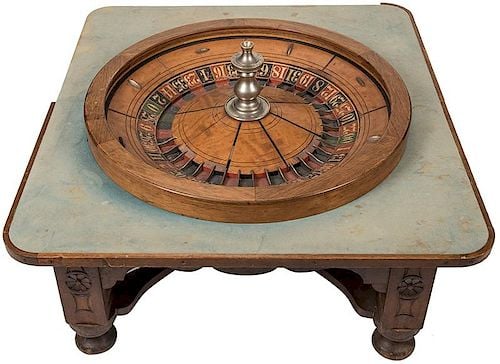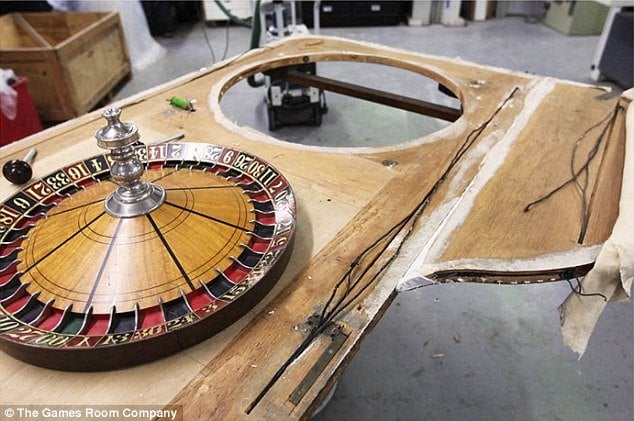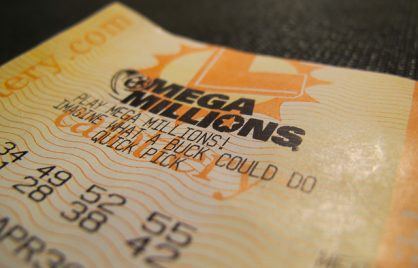R. Paul Wilson On: Rigged Roulette Wheels

Illegal gaming devices come in all shapes and sizes and have been designed to beat or cheat any game on the casino floor.
Some are for playing from “the outside” but others were designed to cheat the players by giving the house complete control over who wins or loses.
But there was more to these devices than the ability to win every time.
Back To The Sting
Fans of George Roy Hill’s perfect con-artist movie The Sting will remember the scene where Robert Redford’s “Hooker,” who was flush with cash from a recent scam, bets it all on a spin of the roulette wheel.
After a large wager is approved and the ball released, the dealer reaches under the table to press a hidden button forcing the ball into a losing slot.
Hooker knew immediately he’d been had but had no recourse thanks to the “family” nature of that illegal gambling establishment.
I loved that scene as a kid and was fascinated to learn – later in life – that such “gaffed wheels” actually exist and were once used all over the world by all kinds of establishments from back-alley gaming rooms to large-scale casinos that needed a fallback option in case some whale took them to the cleaners.
A Different Kind Of Juice

Early versions of gaffed wheels benefited from “Drop In” style wheels that fit into a large hole cut into the table.
These allowed for a ring of electromagnets to be hidden inside the wheel (behind the ball track), which could influence a special ball containing a steel core.
Once the ball passed a number the house wanted to avoid, the magnets could be flashed on and off, stopping the ball in its tracks, forcing fall immediately into the rotor where it would be almost impossible for it to land in the number that just passed by.
These “juice tables” (where the ball was manipulated by “turning on the juice”) were so well built that players and dealers could spend years playing without ever suspecting there was a large electronic device hidden inside that could blow up someone’s pacemaker if they stood too close.
I had a friend who traded in both honest and gaffed collectable gambling devices.
About 20 years ago, he bought what he believed to be a completely legitimate wheel from a casino company but when he stripped the wheel for repair, noticed a “tell” inside the wooden interior.
Suspecting there might be more to this wheel than meets the eye, he had it completely deconstructed and discovered a ring of crusty, leaking batteries behind a continuous loop of coiled wires!
It had long since expired as a working device but was so well made, not even its most recent owner knew it had been a crooked wheel!
Dropping A Pin
Another variation that didn’t need batteries (or to be plugged into a wall socket) was the ingenious “kickoff wheel.”
This type of gaff was used in conjunction with a “dead ball” that bounced a lot less than ordinary roulette balls so would tend to drop straight into the nearest slot once it fell (or was pushed) out of the ball track.
The secret was a couple of invisible holes in the ball track, under the rim on the player’s side and impossible to see from that position.
When the wheel was “operated” a thin, stiff wire would push out of the hole to intercept the ball, sending it downward into the rotor.
As with the “juiced” wheel, this simply stopped the ball after a particular number had passed but gave the house an unbeatable advantage against the players.

Hiding The Switch
Unlike the dealer in The Sting, most staff were never required to activate these devices but simply played on the level until excused and replaced with a crooked dealer, or in some cases the mechanism could be activated by a manager or pit boss.
Early gaffed wheels had switches in the leg or far side of the table, but modern versions were activated by a remote-control garage door opener!
Operating these types of crooked tables took a little skill, not just in reaching the operating button or lever but in how and when to use that unbeatable advantage.
You can’t just beat every spin or the house would soon go broke; no one wants to play at the joint where nobody ever wins!
A gaffed table or wheel must be reserved for extreme situations where the house cannot afford to lose.
Sometimes all it takes is one bad spin to interrupt a player’s winning momentum and put them back on the right (losing) track and crooked dealers must learn to bide their time for the right series of bets by the target player to inflict maximum monetary and psychological damage.
That’s not to say every crooked gambling room operated that way.
A few needed to keep their gaffed tables well oiled because they used them so much, but in those cases, the clientele was either changing constantly or had no other place to exercise their gambling needs.
There’s an old joke about a gambler who is playing a bunch of notorious cheaters in the corner of a quiet saloon when a friend arrives and gestures for the gambler to join him at the bar.
The friend says to the gambler, “Don’t you know those guys are all cheaters? They’ll rob you blind!”
The gambler shrugs, swallows his whisky and says, “I know. But it’s the only game in town.” Then returns to the card table.
Do Modern Casinos Rig Roulette Wheels?
It’s very unusual to find a modern gambling establishment foolish enough to have a gaffed game on the premises.
Apart from being a 400-pound piece of evidence, it’s just not necessary when players keep coming and playing no matter how bad the odds are against them.
Unusual doesn’t mean impossible.
Some casinos have fallen victim to staff interfering with the ball track, changing materials in the wheel, or switching the ball for one that is easier to manipulate or predict.
Crooked maintenance staff have even been known to use pliers on older wheels to narrow the pocket on some numbers, or deepening or adjusting slots to make reds more likely than blacks.
A few years ago, I heard of an Asian casino that was caught dropping a wire frame into numbers on a wheel if those numbers were being over-bet or were popular with big money players.
You’d never think that a wire frame would be deceptive since it’s visible to the naked eye, even when placed in the slot.
When the wheel is spun, however, that wire frame is rendered completely invisible!
So, yes, gaffed wheels are extremely rare but like an ageing rock band, they’re always poised for a comeback.
? R. Paul Wilson On: How To Cheat At Roulette With Past Posting


